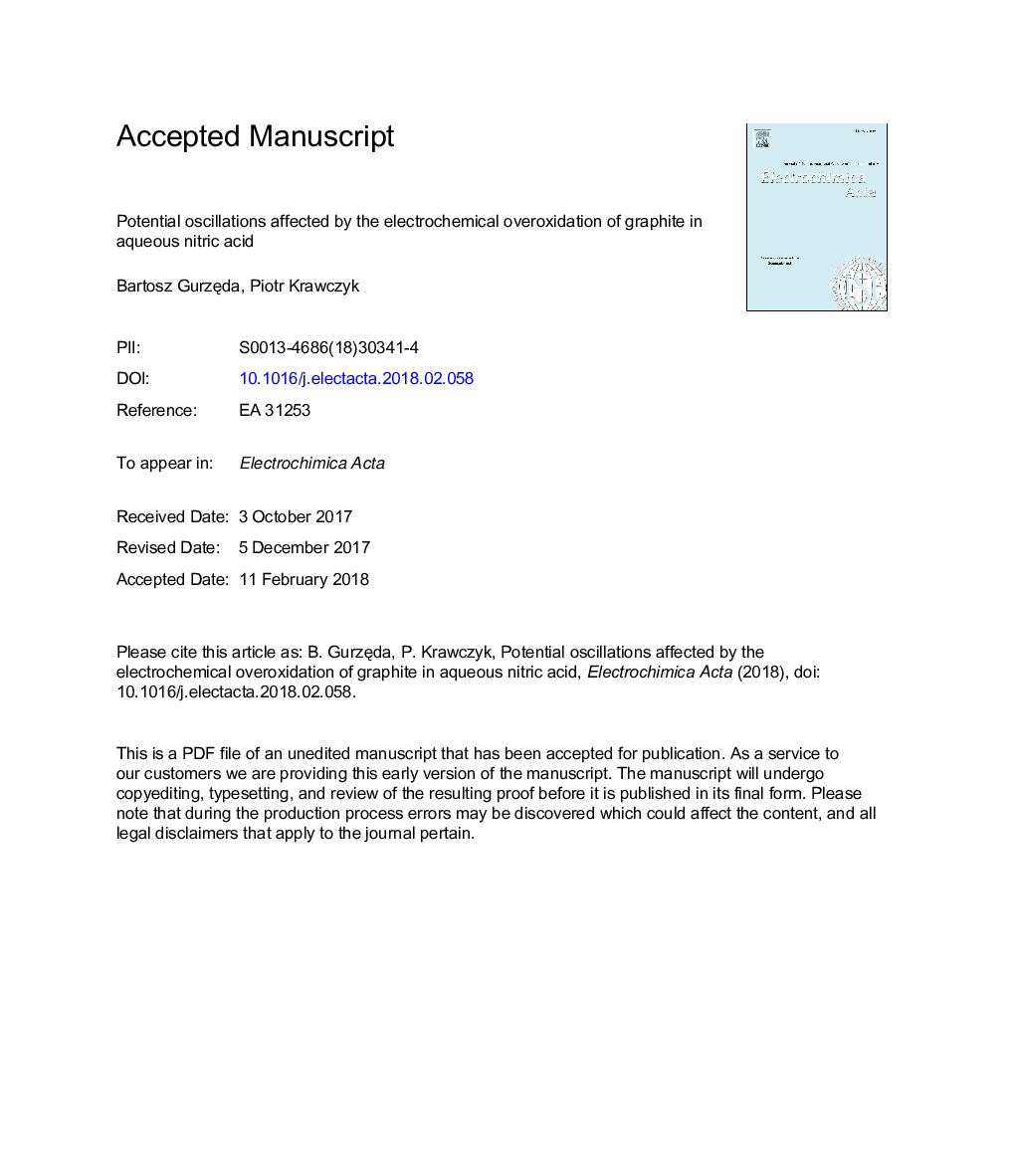| Article ID | Journal | Published Year | Pages | File Type |
|---|---|---|---|---|
| 6603904 | Electrochimica Acta | 2018 | 31 Pages |
Abstract
Potential oscillations caused by electrochemical overoxidation of graphite in aqueous nitric acid were observed for the first time. Deep oxidation of graphite was carried out in 18â¯M HNO3 by galvanostatic method. During the electrochemical treatment enormous anodic charge was consumed to change graphite into the graphite oxide (GO). Thus synthesized GO exhibits significantly increased concentration of epoxy, alkoxy as well as carbonyl groups. On the basis of the gained results mechanism of graphite transformation into GO in aqueous solutions of HNO3 was proposed. Our investigations indicated that to achieve an effective transformation of graphite into GO, the compromise between electrolyte concentration and the stage of intercalation of intermediately formed graphite intercalation compound (HNO3-GIC) should be reached. X-ray diffraction (XRD), Raman spectroscopy, X-ray photoelectron spectroscopy (XPS), scanning electron microscopy (SEM) and transmission electron microscopy (TEM) were used to characterize the obtained GO. Additionally, the influence of electrochemical oxidation of graphite in aqueous nitric acid on its chemical surface composition was investigated using FTIR spectroscopy.
Related Topics
Physical Sciences and Engineering
Chemical Engineering
Chemical Engineering (General)
Authors
Bartosz GurzÄda, Piotr Krawczyk,
